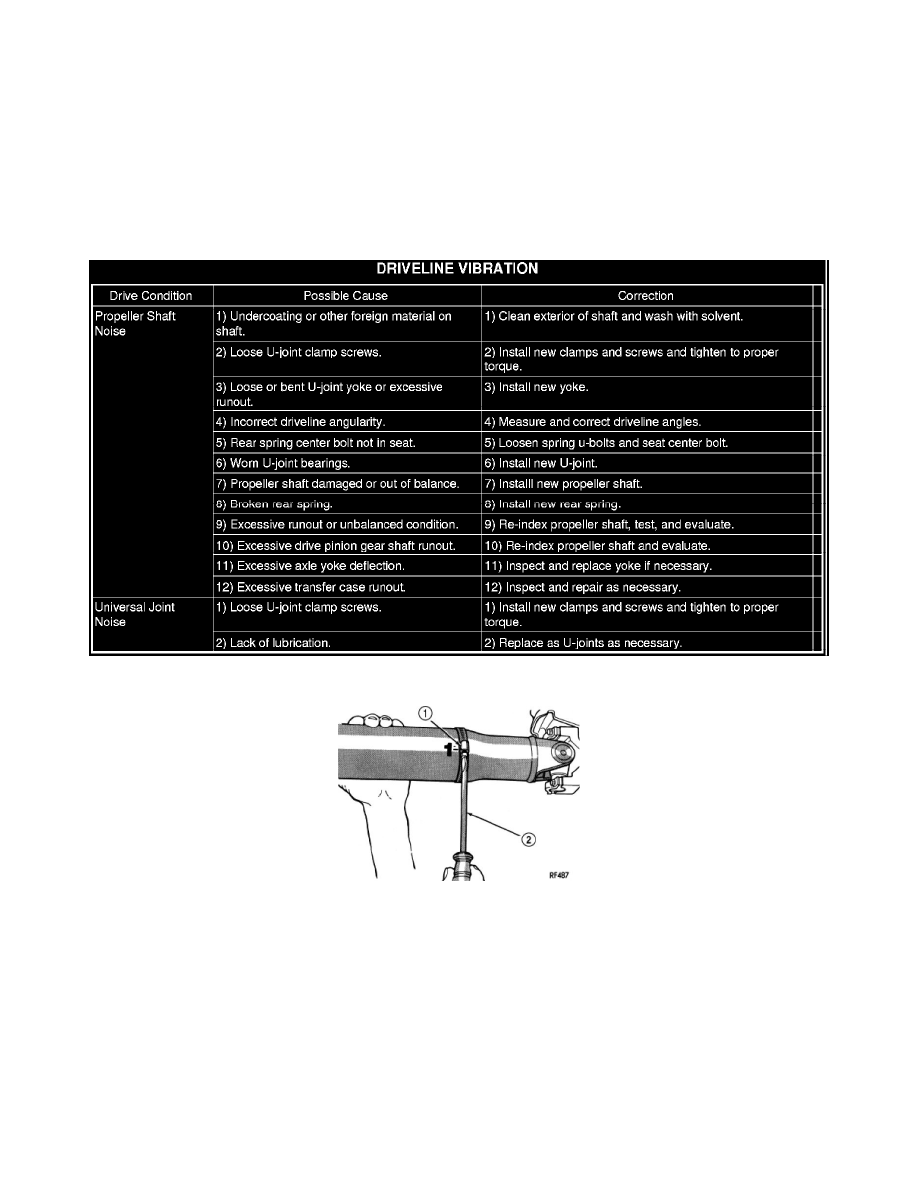Sprinter 2500 V6-3.0L DSL Turbo (2008)

Drive/Propeller Shaft: Testing and Inspection
PROPELLER SHAFT
PROPELLER SHAFT VIBRATION
Out-of-round tires or wheels that are out of balance, will cause a low frequency vibration.
Driveline vibration can be from loose or damaged engine mounts.
Propeller shaft vibration increases with vehicle speed. A vibration within a specific speed is not usually caused by a out of balanced propeller shaft.
Worn universal joints or an incorrect propeller shaft angle, usually cause such a vibration.
PROPELLER SHAFT BALANCE
NOTE: Removing and indexing the propeller shaft 180° relative to the yoke may eliminate some vibrations.
If propeller shaft is suspected of being out of balance, verify with the following procedure:
1. Place vehicle in neutral.
2. Raise and support the vehicle by the axles as level as possible.
3. Clean all foreign material from propeller shaft and universal joints.
4. Inspect propeller shaft for missing balance weights, broken welds, and bent areas.
NOTE: If propeller shaft is bent, it must be replaced.
5. Inspect universal joints for wear, properly installed and correct alignment with the shaft.
6. Check universal joint clamp screws torque.
7. Remove wheels and tires. Install wheel lug nuts to retain the brake drums/rotors.
8. Mark and number propeller shaft six inches from the pinion yoke end at four positions 90° apart.
